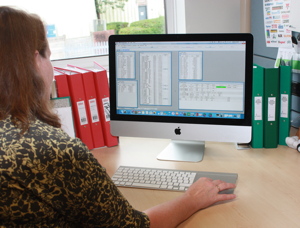System reboot

Trevor Dann considers the retrofit option for older cooling systems in ageing data centres that can keep them performing in a robust, reliable and energy efficient way.
Our older data centres are approaching an age where their capital plant will be approaching its end of life point. Decent mechanical equipment should last at least 15 to 20 years, but sadly the past couple of decades has seen capital cost prioritised over longevity, so much equipment will be found wanting at just around 10 years old. Chiller equipment, providing vital cooling for data servers, is typical of this shortsightedness - short term savings creating long term headaches.
Although the data industry works to develop more efficient electronics that can function safely at higher temperatures, it still relies on much earlier equipment which is still heavily reliant upon mechanical cooling. Some cooling technologies have provided good energy efficiency, but what about longevity?
Beyond 2000
Major efficiency improvements have been achieved over the past 20 years, and with the advent of reliable inverters over the past decade along with reliable modes of control, the efficiency ratio of the typical air-cooled chiller has steadily increased from ~ 2.5 in 1999 to >5 today.
But what many users don’t realise is that retrofit techniques can achieve today’s efficiency from that 1999 chiller. Retrofit is not just about fixing aged and unreliable components, instead it offers an entirely fresh approach, applying current techniques, literally top down, to olderchillers.
 |
|
Retrofit provides a way to refresh older chillers and enhance performance |
A typical retrofit to achieve ESEER equivalent >5 will likely comprise:
•Inverter driven screw compressors
•High efficiency condensers suitable for a damp cold and salty climate
•Modern electronics with electronic refrigeration control
•Energy efficient EC Fans
•Improved part load efficiency, not just peak efficiency
•Continuous optimisation
External remote support
Should a breakdown occur fast and effective support is crucial for data centre integrity.
A chiller retrofit can utilise the data industry’s own technologies to facilitate remote support of chillers supporting data centres. For example, the RODEM system pioneered by Thermozone offers two way interactive support, whereby the chiller can be fully accessed entirely by remote access via mobile phone networks. The chiller can also send out an alert if a fault condition arises, enabling swift attention, and in most cases a complete resolve, or where an engineer follow is required, his attentions can be focused directly to the issue diagnosed remotely.
Efficiency optimisation
Remote support also facilitates the ability to review chillers monthly, providing opportunity to fine tune individual chillers to provide best operating efficiency for the specific season. Often chiller settings are set to provide year around functionality, for which a compromise is lower efficiency. By tuning a chiller differently for summer-time operation to that required in deep winter means the chiller can be kept several times more efficient.
Data security
Unlike typical building management systems that are inherently linked to internal data systems, remote access using the 3/4G phone networks stands completely alone, meaning external access does not in any way compromise site data security. Remote access nodes are hated by data professionals, but no one objects to someone having a mobile phone in their pocket.
 |
|
Remote support gives focused attention to any issues, and swift resolution |
F Gas phase down
Over 99% of data cooling chillers will be using a grade of refrigerant known as an HFC or hydro fluoro carbon, of which R407C, R410A and R134a will likely dominate. Presently all of these fluorinated refrigerants are undergoing a major phase down under current EU legislation that will by 2030 see an 80% reduction in volume as measured by their GWP equivalent CO2 tonnage.
Usage in 2018 has fallen 54% against 2008-11 figures. Already the cooling industry as a whole is feeling the squeeze on HFC resources. However, older equipment on R407C and R134a can be successfully retrofitted to use low GWP alternatives. Coupled with significant energy improvements, many retrofit projects achieve partial payback within three years (as measured by energy benefit alone) and invariably complete payback within five years.
Those still specifying new R410A equipment for any installation need to get on board with F Gas phase down now. The R410A systems cannot safely be retrofitted without major loss of capacity.
There are simply no low GWP alternatives for R410A, and it is reported R410A will meet critical supply shortages this year.
As data centre cooling support equipment nears its life point there is an option to undertake a less radical upgrade rather than procuring new chillers. Retrofit provides cost effective, efficient, reliable solutions and invariably is less disruptive because original support systems, such as hefty chilled water pipes and mains supply cables do not have to be changed. Retrofit is also a form of recycling by re-use which is recognised by the Carbon Trust.
New equipment has seen a major uplift in apparent machine quality, but all too often the aesthetics are literally skin deep. Retrofit offers a cost-effective and straightforward approach to ensuring that equipment that is five, six or even 10 years old.
Trevor Dann is director of Thermozone







